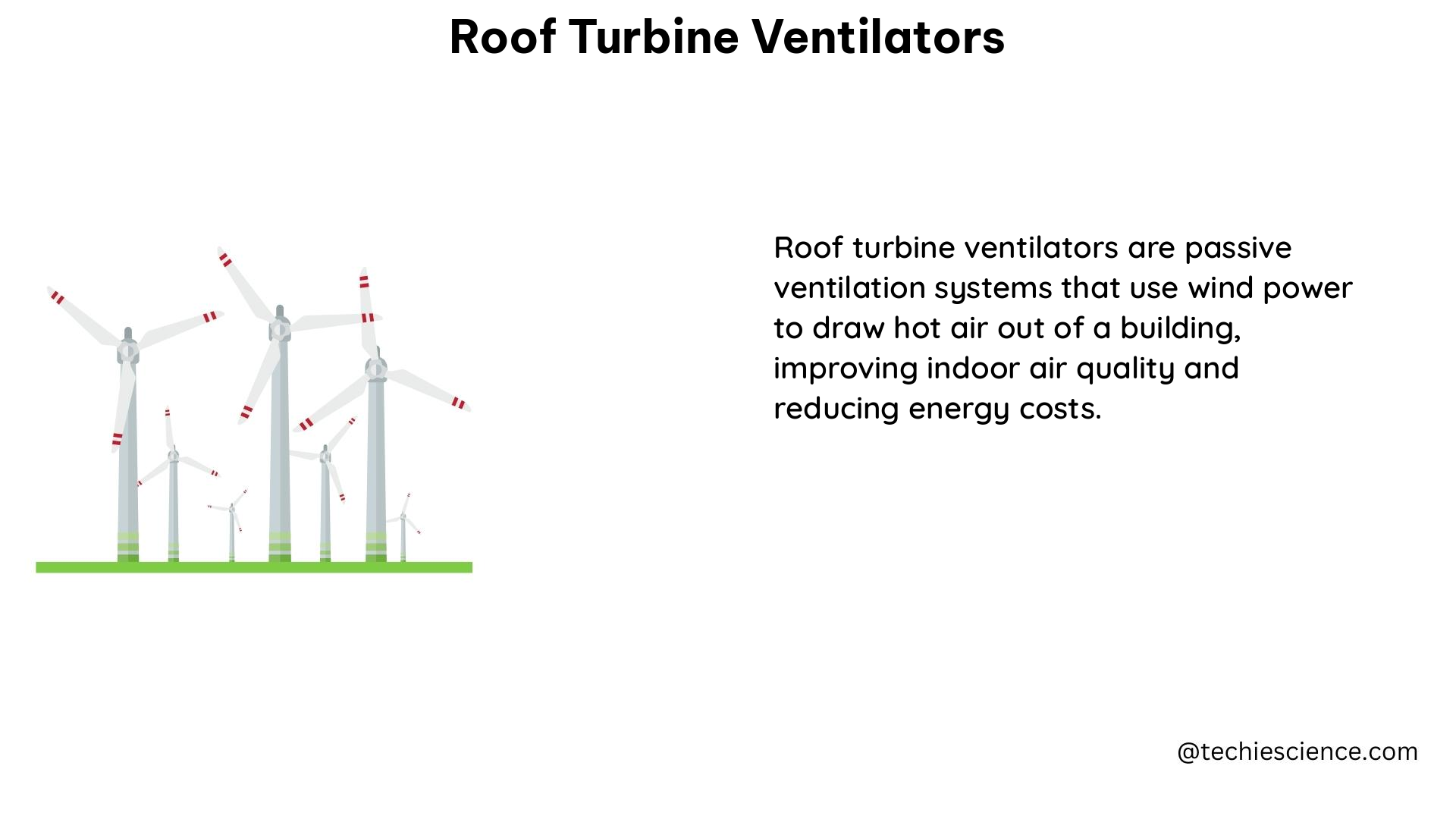Roof turbine ventilators are a popular and effective solution for removing heated air from attic spaces during the summer months, thereby reducing energy transfer between the attic and living spaces. These devices are composed of a base assembly fixed to the roof and a rotating element that spins under the influence of air moving over the roof surface, allowing the egress of hot air from the attic.
Measuring Attic Turbine Ventilator Performance
The performance of attic turbine ventilators has been extensively evaluated through various studies, providing valuable insights into their measurable and quantifiable characteristics.
Flow Rate and Ventilation Rate Measurements
One study measured the flow rate through the ventilator, ventilator height, 10-m wind speed, ambient temperature, and temperatures at various points within the attic using a computer-controlled data acquisition system. The study found that the actual attic ventilation rate was measured continuously using a constant-concentration tracer gas system, which consists of an infrared gas analyzer, a computer-controlled data acquisition system, a tracer injector, and a sampling pump. The tracer gas system used has a resolution of 0.1 air changes per hour (ach).
Another study aimed to accurately measure the flow rate of turbine ventilators for different wind speeds. The study found that the rotation speed of the turbine ventilator increased by 8.4 rpm with the addition of a wind cup, resulting in a 1.7% improvement in efficiency.
Technical Specifications
In terms of technical specifications, roof turbine ventilators typically have a diameter ranging from 6″ to 20″ and are designed to operate at a rotation speed of 1500 rpm for optimal performance. The efficiency of turbine ventilators has been shown to improve with the addition of inner vanes, and the influence of inclined roofs can extend safety limits by reducing wind force applied to the ventilator.
Factors Affecting Turbine Ventilator Performance

Several factors have been identified as influencing the performance of roof turbine ventilators, including:
Wind Speed and Direction
Wind speed and direction play a crucial role in the performance of turbine ventilators. Studies have shown that the rotation speed of the turbine increases with higher wind speeds, leading to improved ventilation rates. The addition of wind cups can further enhance the efficiency of the ventilator by increasing the rotation speed.
Ambient Temperature and Humidity
The temperature and humidity levels within the attic space can also impact the performance of turbine ventilators. Higher ambient temperatures and lower humidity levels can increase the temperature differential between the attic and the outside air, leading to more efficient hot air removal.
Roof Inclination
The inclination of the roof can also affect the performance of turbine ventilators. Studies have found that the influence of inclined roofs can extend the safety limits of turbine ventilators by reducing the wind force applied to the device, which can lead to improved efficiency and longer lifespan.
Improving Turbine Ventilator Efficiency
Researchers have explored various methods to enhance the efficiency of roof turbine ventilators, including:
Inner Vanes
The addition of inner vanes to the turbine ventilator has been shown to improve its efficiency. The vanes help to guide the airflow and increase the rotation speed of the turbine, leading to enhanced ventilation rates.
Wind Cups
As mentioned earlier, the addition of wind cups to the turbine ventilator can also improve its efficiency. The wind cups increase the rotation speed of the turbine, resulting in a higher airflow rate and better ventilation.
Computational Fluid Dynamics (CFD) Modeling
Numerical investigations using Computational Fluid Dynamics (CFD) modeling have been conducted to analyze the performance characteristics of roof turbine ventilators. These studies have provided valuable insights into the airflow patterns, pressure distributions, and other factors that influence the efficiency of these devices.
Conclusion
Roof turbine ventilators are a reliable and efficient solution for removing heated air from attic spaces, thereby reducing energy transfer and improving the overall comfort of a building. By understanding the measurable, quantifiable data and the factors that influence their performance, homeowners and building professionals can make informed decisions when selecting and installing these devices. The advancements in research and the incorporation of innovative features, such as inner vanes and wind cups, have further enhanced the efficiency of turbine ventilators, making them an increasingly attractive option for sustainable and energy-efficient building design.
References:
- EVALUATION OF THE PERFORMANCE OF ATTIC TURBINE VENTILATORS. J.D. Dale, Ph.D., P.E. AIVC.
- Numerical investigations on roof ventilator turbine performance characteristics using ANSYS. Lionel Beneston S., Shilaja C., Babu Loganathan Ganesh, Rajasekaran P., Manikandan R., Girimurugan R. General Medicine.
- Performance testing and comparison of turbine ventilators. Khan Naghman, Su Yuehong, Riffat Saffa B., Biggs Colin. Renewable Energy, Sustainability and the Environment.

The lambdageeks.com Core SME Team is a group of experienced subject matter experts from diverse scientific and technical fields including Physics, Chemistry, Technology,Electronics & Electrical Engineering, Automotive, Mechanical Engineering. Our team collaborates to create high-quality, well-researched articles on a wide range of science and technology topics for the lambdageeks.com website.
All Our Senior SME are having more than 7 Years of experience in the respective fields . They are either Working Industry Professionals or assocaited With different Universities. Refer Our Authors Page to get to know About our Core SMEs.